Find and visit WW2 graves
The Commonwealth War Graves Commission commemorates close to 350,000 identified war graves from the Second World War, as well as a further 25,000 unidentified burials. Find out more about our WW2 Graves around the world and discover some of the stories of those we commemorate.
Where are the Commonwealth WW2 war graves?
Simply put, Commonwealth war graves from World War Two are found all over the world.
By 1939, the rapid development of air travel meant that the world was a smaller place than it had been 20 years before at the end of World War One. This, combined with the long, bloody campaign in the Pacific, meant that the fighting spread even further than in the previous war.
Aside from Antarctica, there are Commonwealth casualties of World War Two buried on every continent in the world.
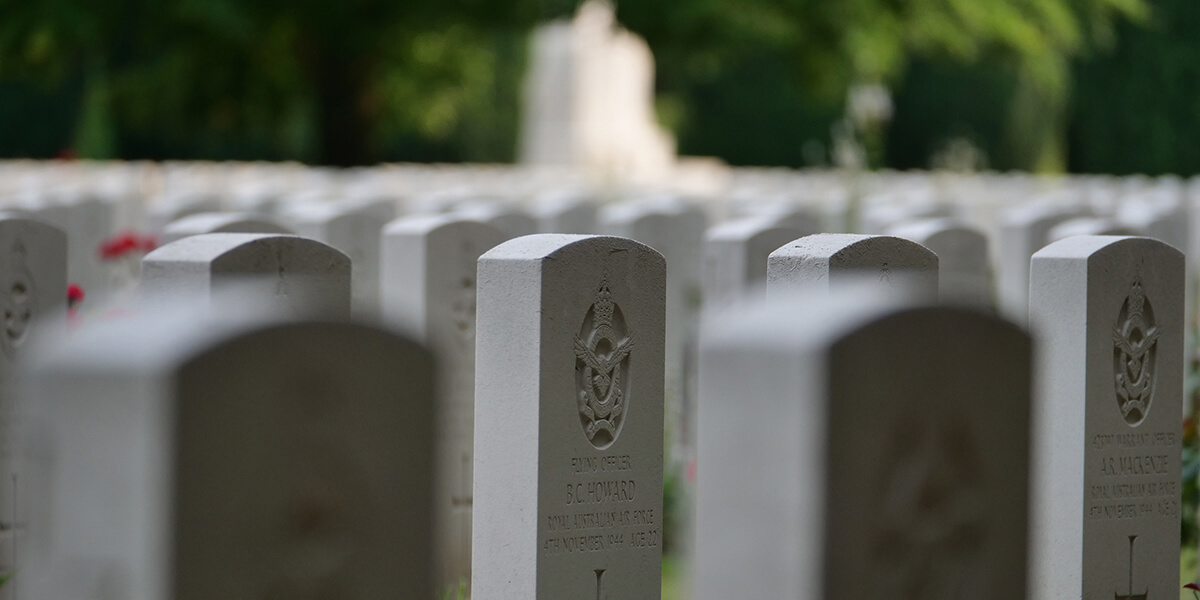
Where is the biggest WW2 cemetery?
The CWGC war cemetery with the largest number of WW2 burials is Reichswald Forest War Cemetery in northwest Germany.
Many of the more than 7500 burials here are of casualties sustained during the Allied advance in Germany in February 1945, but many others are casualties taken from smaller sites across Germany and concentrated into a single large site. More than half of the casualties here are pilots and flight crew of the Royal Air Force, the Royal Australian Air Force, the Royal Canadian Air Force and the Royal Air Force Volunteer reserve - casualties of the intensive air attacks over Germany throughout the war.
How were the dead buried in WW2?
Much of the warfare in World War Two was fast, mobile fighting - a far cry from the static trench warfare that typified the Western Front in the First World War, meaning that the war dead from World War Two, were laid to rest in smaller cemeteries.
WW2 cemeteries tended to be smaller than those from World War One, where often our sites were built in places where there had been prolonged periods of fighting, and we often further expanded when burials from smaller, battlefield cemeteries were brought to the larger sites.
Many of the larger sites from WW2 were those that were built near hospitals or prisoner-of-war camps - for example, Takkyan War Cemetery and Kanchanaburi War Cemetery.
There were also a lot of scattered burials, mainly of aircrew who died when they were shot down or crashed over enemy territory and were often buried close by to where they landed.
Are WW2 bodies still being found?
Yes, casualties from World War Two are still being discovered today. Many of these casualties are pilots and flight crew who came down in remote areas and have only recently been rediscovered.
Flight Sergeant (Flt Sgt) William Robert Stephen Hurrell is one such example. In 1944, Flt Sgt Hurrell crashed while on a reconnaissance flight and was attacked by an overwhelming number of enemy planes.
He was not discovered until his single-seater Hawker Typhoon was excavated in 2019. He was then identified and buried in September 2022 more than 78 years after his death.
WW2 grave markers and design
Aside from the dates inscribed on the front, there is no real difference between a headstone for a World War One casualty and a World War Two casualty. Wherever possible the headstones follow the standard CWGC formula, although the stone itself may differ due to geography and climate.
In some areas it is impossible to erect a traditional CWGC headstone, either due to space limitations, or because the soil or climate prevents it. Instead, these war graves are usually marked with recumbent (flat) headstones, or by pedestal markers.
Famous Commonwealth war graves from WW2 to visit
French war graves from WW2
There are close to 50,000 CWGC war graves in France from World War Two. Many of the casualties came from the initial German invasion of France at the beginning of the war, and the Allied counter-invasion in 1944, there are also many scattered war graves across the country, of airmen buried after coming down over France.
The first French town to be liberated after the invasion of Normandy, Bayeux holds a special significance. Bayeux War Cemetery is home to the largest number of World War Two burials in France, with more than 4000 Commonwealth troops buried there, almost exclusively from the D-Day landings and initial drive into Normandy in the weeks following 6 June 1944.
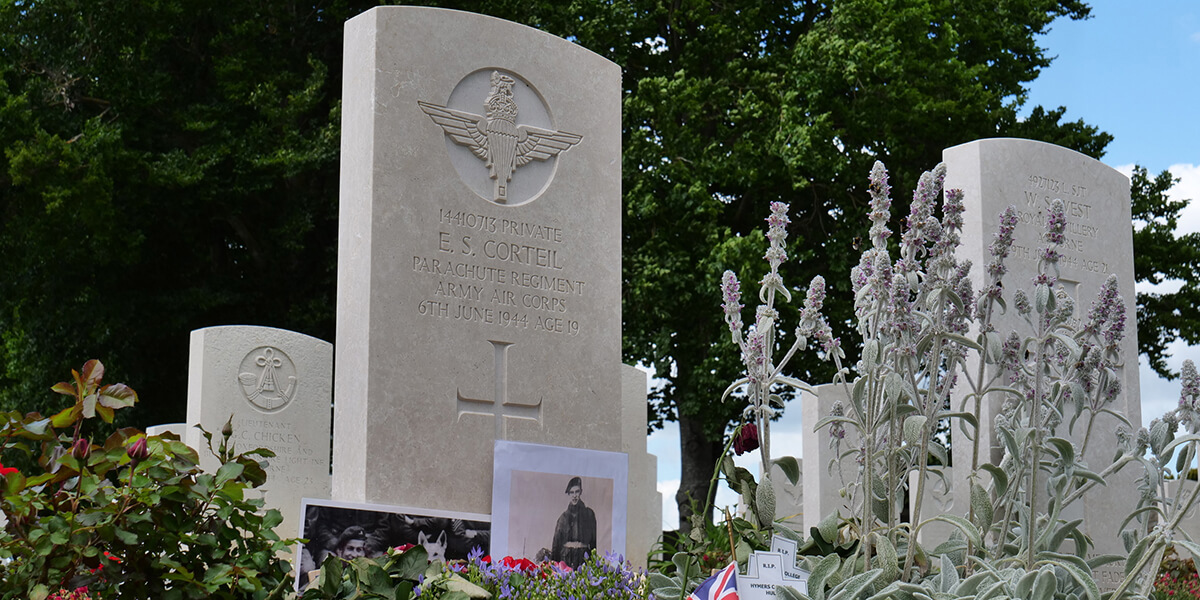
Headstone of Private Emile Servais Corteil and Glen at Ranville War Cemetery
Private Emile Servais Corteil
Ranville War Cemetery contains nearly 2,300 World War Two war graves. The village of Ranville, and its important bridge across the Caen Canal, was one of the primary objectives of the invasion.
The 6th Airborne Division was tasked with securing the bridge. Among them was Private Emile Servais Corteil who landed in France with Glen, a specially trained dog who was tasked with protecting his troop and alerting them to enemy patrols.
Both Private Corteil and Glen were killed on the morning of 6 June 1944, Corteil was aged just 19 years old. They were found lying close together and were later buried together at Ranville War Cemetery. The inscription on Cortiel’s headstone reads: HAD YOU KNOWN OUR BOY YOU WOULD HAVE LOVED HIM TOO. "GLEN" HIS PARATROOP DOG WAS KILLED WITH HIM
German WW2 graves
We’ve already noted that the largest World War Two CWGC cemetery is Reichswald Forest War Cemetery in Germany with more than 7,600 burials, but it is just one of a number of large cemeteries in the country. There are around 26,000 CWGC war graves in Germany.
The next largest is the Berlin 1939-45 War Cemetery. Most of the burials here are aircrew who were killed while on raid over Berlin and eastern-Germany, while some were prisoners of war who died while in captivity. As with Reichswald Forest, Berlin 1939-45 War Cemetery was formed by bringing smaller numbers of burials together to one site. Graves were brought from eastern German cities and towns like Leipzig and Dresden for burial here. There are now more than 3,000 World War Two war graves here.
It may come as a surprise to some that the CWGC cares for more than just graves of Commonwealth casualties - and even more of a surprise to discover how many German casualties we look after. An agreement between the UK and German governments means that we care for close to 20,000 German war graves in the UK and elsewhere in the world.
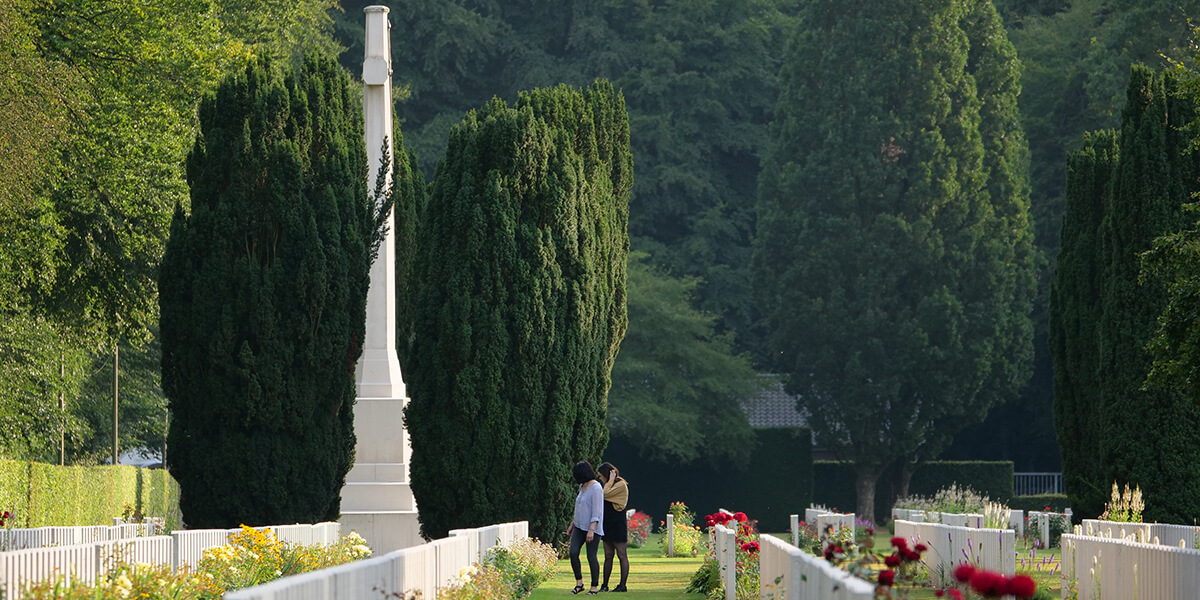
Reichswald Forest War Cemetery, Germany
Wing Commander Ivan McLeod Cameron
Reichswald Forest War Cemetery is the final resting place of Wing Commander Ivan McLeod Cameron; the first Australian airman to be killed on air operations in World War Two, on 28 September 1939 - just weeks after the declaration of war.
Wing Commander Cameron was the pilot of an RAF Bristol Blenheim on a reconnaissance mission over Germany. The Blenheim crashed near Osnabrück, likely after being attacked by a German aircraft, killing Cameron and his crewmates Sergeant Thomas Cecil Hammond and Aircraftman 1st Class Thomas Fullerton.
WW2 war graves in Italy
Winston Churchill is famously said to have called Italy the “soft underbelly of Europe” believing it to be the weak point of the defences surrounding Nazi-occupied Europe. It proved to be anything but an easy victory for the Allied forces. The invasion of mainland Italy in September 1943 was the beginning of more than a year and a half of bitter fighting before German forces in Italy officially surrendered at the beginning of May 1945.
The largest number of CWGC war graves in Italy can be found at Cassino War Cemetery at the town of Cassino. The Battle of Monte Cassino, a series of Allied attacks on prepared German defences that stood between them and Rome. The battle lasted for four months, with the defenders repeatedly rebuffing the Allied advance and cost tens of thousands of lives on both sides. More than 4,000 Commonwealth troops are buried at Cassino War Cemetery, with another 4,000 commemorated on a memorial within the cemetery.
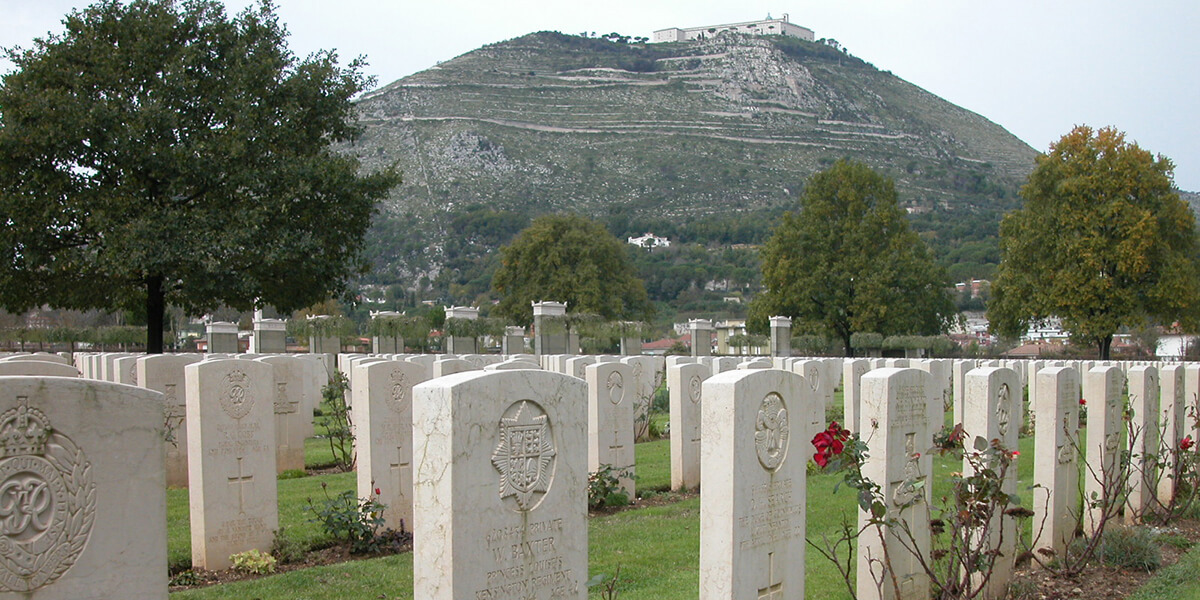
Cassino War Cemetery, Italy
Rifleman Kalu Ram Gurung
Soldiers from many Allied nations fought at Monte Cassino, among them the Indian Army.
Buried at Monte Cassino War Cemetery is Rifleman Kalu Ram Gurung of the 5th Royal Gurkha Rifles (Frontier Force). He was killed in action on 28 May 1944, after the Allied forces had pushed through the defences at Cassino and were advancing on Rome and was awarded the Indian Order of Merit for his actions.
His citation tells us that, when his section commander was killed while attacking a number of fortified machine guns, Kaluram took his place and, despite being wounded, rushed forward to close with the enemy.
He attempted to cover his comrades as they flanked the machine gun post, but the attack was stopped. Kaluram instead rushed the machine guns, and threw in a grenade before killing the machine gunner with his Kukri - the traditional Gurkha knife. Although he died, his efforts inspired the rest of his squad. The citation states: “His self sacrifice undoubtedly saved many lives and caused considerable damage to the enemy.”
WW2 war graves in Belgium
Like France, most of the fighting in Belgium bookended the war, with the battles happening during the initial German advance at the start of World War Two, and then the eventual Allied pushback following the invasion of Normandy.
Many of the war graves in Belgium are associated with the Battle of the Scheldt. Allied forces had captured the city of Antwerp, an important logistical target thanks to its deepwater port - vital for the transport of supplies to the forces in Europe, however German forces still held the vital Scheldt estuary, the waterways that connected the city to the sea.
This led to one of the fiercest battles of the war, as a predominantly Canadian force fought tooth and nail to dislodge the defenders. The fighting, reminiscent of the bloody warfare of World War One, cost thousands of lives on each side. Schoonselhof Cemetery and Adegem Canadian War Cemetery hold more than 2,600 casualties between them, predominantly Canadian casualties of the Battle of the Scheldt, with even more casualties from the battle buried in the Netherlands.

Heverlee War Cemetery, Belgium
Flying Officer Donald Edward Garland and Sergeant Thomas Gray
Germany invaded Belgium, the Netherlands and Luxembourg in May 1940 and the Allied defenders were immediately on the back foot. Part of the defensive plan was to deprive Germany of important strategic crossings and slow the advance.
The RAF were tasked with destroying an important bridge over the Albert Canal and on 12 May 1940, five Fairey Battle bombers were dispatched to attack it, the lead aircraft crewed by Flying Officer Donald Edward Garland, Sergeant Thomas Gray and Leading Aircraftman Lawrence Royston Reynolds.
Despite meeting fierce anti-aircraft fire and enemy fighters, they pressed home the attack, dive bombing the bridge to ensure accuracy. Only one of the attacking aircraft managed to return.
Both Flying Officer Garland and Sergeant Gray received a posthumous Victoria Cross for managing to press home the attack despite the defences. Both are now buried in Heverlee War Cemetery, Belgium.
British WW2 graves
There are more than 183,000 World War Two casualties commemorated on our memorials and buried in our cemeteries in Britain.
While the front lines never reached Britain itself, air combat and bombing raids over the UK, naval warfare off the coast of Britain, training exercises and medical evacuations from other theatres of war all contributed to the large number of commemorations found here.
Britain’s role as an ‘Island Fortress’ meant that there were service people of many nationalities in Britain throughout the war. This is demonstrated at Brookwood Military Cemetery, where there are more than 4000 World War Two war graves, and is the site with the largest number of WW2 war graves in Britain. Each of our member states are represented at Brookwood, alongside burials from Czechoslovakia, Germany, Italy, Belgium, France and Poland.
As well as in our larger cemeteries like Brookwood, Harrogate Stonefall Cemetery and Cambridge City Cemetery, there are many smaller sites commemorating just a few hundred casualties at a time, as well as thousands of scattered war graves - individual graves in churchyards and cemeteries across the country.
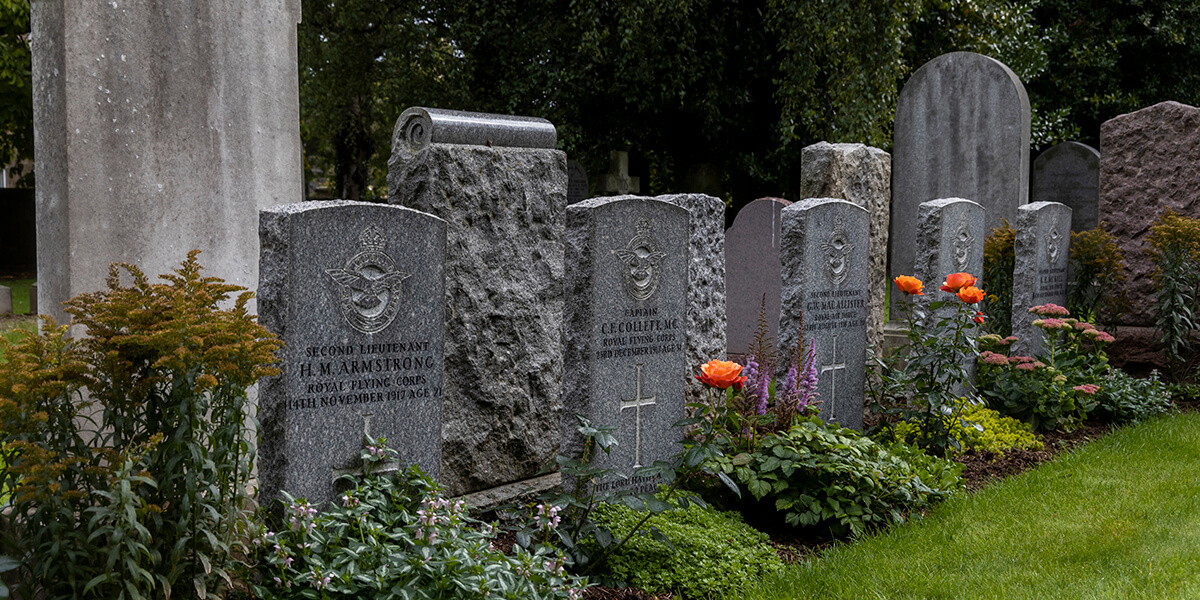
Edinburgh (Comely Bank) Cemetery, Scotland
Boy Reginald Earnshaw
One of the most famous war graves in Britain is that of Boy Reginald Earnshaw, who is believed to be the youngest known casualty of World War Two.
Having lied about his age to sign up, Earnshaw was just fourteen years old when he left school to join the merchant marine. He was killed in July 1914 while serving on the SS North Devon. The North Devon was attacked by German aircraft off the coast of Norfolk, and was sunk with the loss of six lives.
As he’d been living in Edinburgh when he signed up, he was buried in Edinburgh Comely Bank cemetery, although because he lied on his papers, he was initially commemorated on Tower Hill Memorial.
It wasn’t until 2009 when a former ship mate came looking for him, that his story was discovered. Earnshaw is now properly commemorated at Comely Bank with a CWGC headstone.
World War Two graves in Asia
Some of our largest WW2 cemeteries can be found in the jungles of Asia - specifically along the path of the infamous Burma-Siam Railway - also known as the Death Railway.
The Japanese forces wanted to build a railway to deliver supplies to the front lines in Burma (now Myanmar). The planned route was 250 miles long and cut through inhospitable jungle, rocky outcrops and across rivers. The Japanese forced around 60,000 Allied prisoners of war alongside as many as 250,000 local labourers to build it, with primitive tools and sheer weight of manpower. The construction of Bridge 277 over the Khwae Noi inspired the famous film The Bridge on the River Kwai.
Casualties among the prisoners were high. Terrible conditions including a lack of food and medical care, combined with the punishing work in the tropical climate, as well as mistreatment at the hands of their captors lead to the death of an estimated 16,000 Allied prisoners of war, as well as as many as 90,000 civilian labourers.
Men were often buried where they fell, but at the end of the war, the Commonwealth casualties were moved to three large cemeteries in Thailand and Burma: Kanchanaburi War Cemetery, Chungkai War Cemetery and Thanbyuzayat War Cemetery.

Kanchanaburi War Cemetery, Thailand
Corporal James Ronald Sewell
There are more than 1,500 Commonwealth war graves in Yokohama War Cemetery in Japan. It commemorates a mixture of prisoners of war who died in captivity and those who died in Japan while serving as part of the occupying forces.
One such example is Corporal James Ronald Sewell. Sewell died while serving in Japan in October 1947, as part of the A.I.F 10 Bomb Disposal Platoon. During his service in Japan he won the George Medal.
In October 1943, Sewell was working as part of a bomb disposal team when a boat nearby, loaded with 83 tons of high explosives, caught fire. The Japanese labourers and crew working on the boat leapt into the sea to escape the flames. Seeing the men in the water, Sewell took command of a dinghy and set out to rescue as many men as he could.
The boat exploded, killing 14 labourers and one other Australian. Despite being injured in the blast, Sewell continued to pick up survivors. His citation states that, “had it not been for the untiring efforts of Corporal Sewell, with total disregard for his own personal safety, in his efforts to rescue survivors and control panic, a far greater number of Japanese would have perished.
World War Two graves around the world
Technological advances - particularly the advancement of air warfare - and the war in the Pacific meant that the fighting in World War Two touched every corner of the globe. Today, you can find CWGC war graves on every inhabited continent.
The Mediterranean Sea was a key battle ground in both world wars, with the island of Malta a key strategic outpost, as the only British-held harbour between Gibraltar and Alexandria and as a base for air and submarine operations against Axis convoys supplying North Africa. Malta was put under siege between 1940 and 1942, yet managed to hold out against overwhelming odds. Today, nearly 4000 men and women are commemorated on memorials or buried in war graves in Malta.
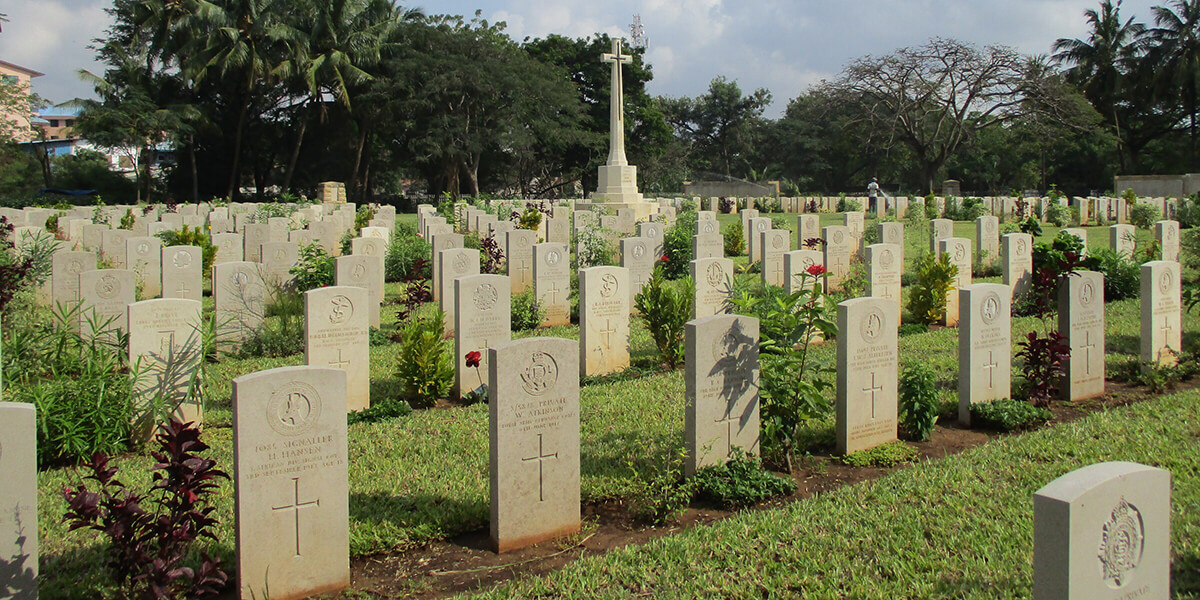
Dar Es Salaam War Cemetery, Tanzania
While many know about the battles in North Africa in World War Two, less is known about the conflict in the rest of the continent. The East coast of Africa saw fighting during both wars, and today CWGC continues to maintain war graves in Kenya and Tanzania, as well as elsewhere on the continent.
War in the Pacific was incredibly brutal, with the Commonwealth forces and their allies battling against tropical heat, monsoon rains and a fearsome enemy. Although well away from the fighting, there are still close to 2,000 WW2 casualties commemorated on memorials and buried in war graves in New Zealand. Many of those who died here did so during training, or as a result of their injuries having been evacuated from the battlefields.
Protecting and maintaining Second World War graves
There are more than 370,000 World War Two burials in CWGC cemeteries around the world.
Looking after this many war graves has its own set of challenges thanks to the differences in climate as well as the logistical difficulties in maintaining sites across the globe.
We work consistently to ensure that all of our sites are protected from the harsh conditions, such as building flood protection at Imphal in India or restoring Durban Stellawood Cemetery in South Africa after storms caused a landslide on our site.
We also continue to maintain our war graves in accordance with our sustainability policies, preferring to maintain rather than replace wherever possible. Our expert stonemasons often visit our sites to ensure that all of our headstones are well maintained and easy to read.
Find a war grave from WW2
You can use our website’s Find War Dead tool to search any of the World War Two war graves and war memorials in our database.
You can add all the information you know about the casualty, including rank, name, regiment and service number and then select the Second World War tick box under the War heading. This will limit your search to only those casualties that fall within our dates of responsibility for World War Two.

